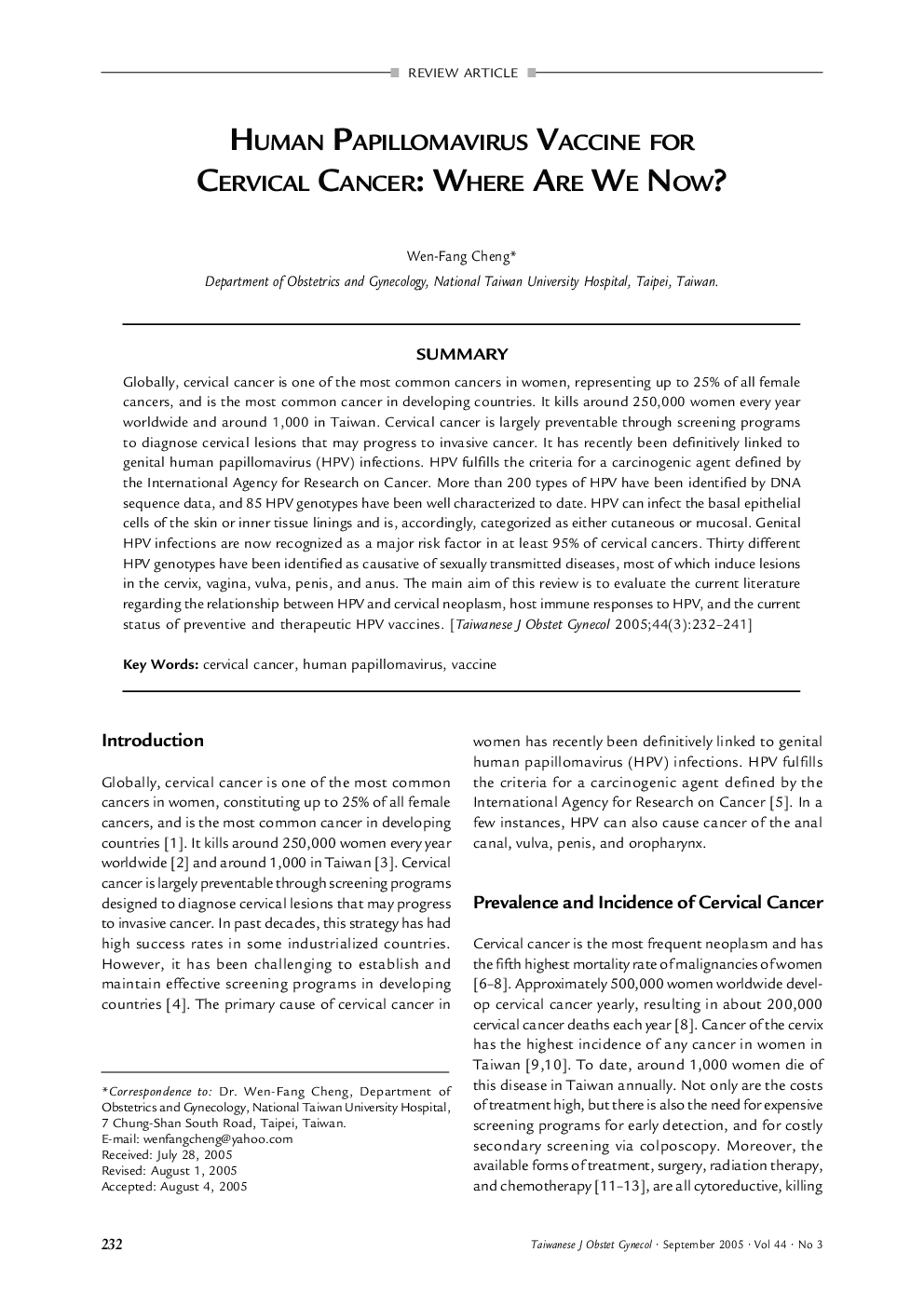| Article ID | Journal | Published Year | Pages | File Type |
|---|---|---|---|---|
| 10070302 | Taiwanese Journal of Obstetrics and Gynecology | 2005 | 10 Pages |
Abstract
Globally, cervical cancer is one of the most common cancers in women, representing up to 25% of all female cancers, and is the most common cancer in developing countries. It kills around 250,000 women every year worldwide and around 1,000 in Taiwan. Cervical cancer is largely preventable through screening programs to diagnose cervical lesions that may progress to invasive cancer. It has recently been definitively linked to genital human papillomavirus (HPV) infections. HPV fulfills the criteria for a carcinogenic agent defined by the International Agency for Research on Cancer. More than 200 types of HPV have been identified by DNA sequence data, and 85 HPV genotypes have been well characterized to date. HPV can infect the basal epithelial cells of the skin or inner tissue linings and is, accordingly, categorized as either cutaneous or mucosal. Genital HPV infections are now recognized as a major risk factor in at least 95% of cervical cancers. Thirty different HPV genotypes have been identified as causative of sexually transmitted diseases, most of which induce lesions in the cervix, vagina, vulva, penis, and anus. The main aim of this review is to evaluate the current literature regarding the relationship between HPV and cervical neoplasm, host immune responses to HPV, and the current status of preventive and therapeutic HPV vaccines.
Related Topics
Health Sciences
Medicine and Dentistry
Obstetrics, Gynecology and Women's Health
Authors
Wen-Fang Cheng,
